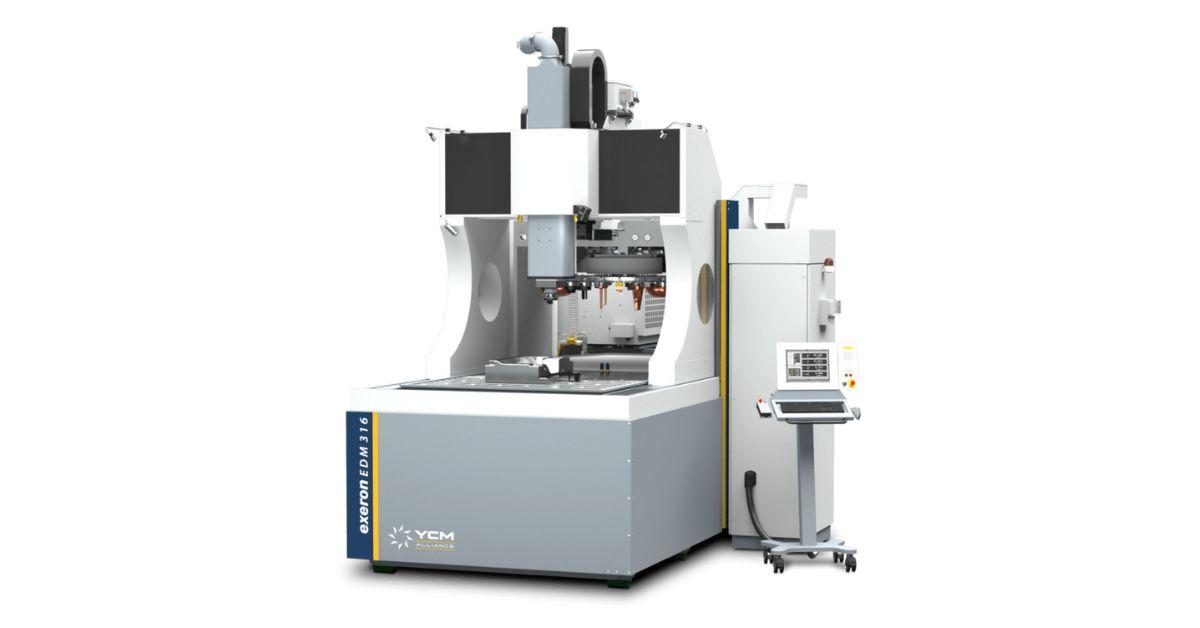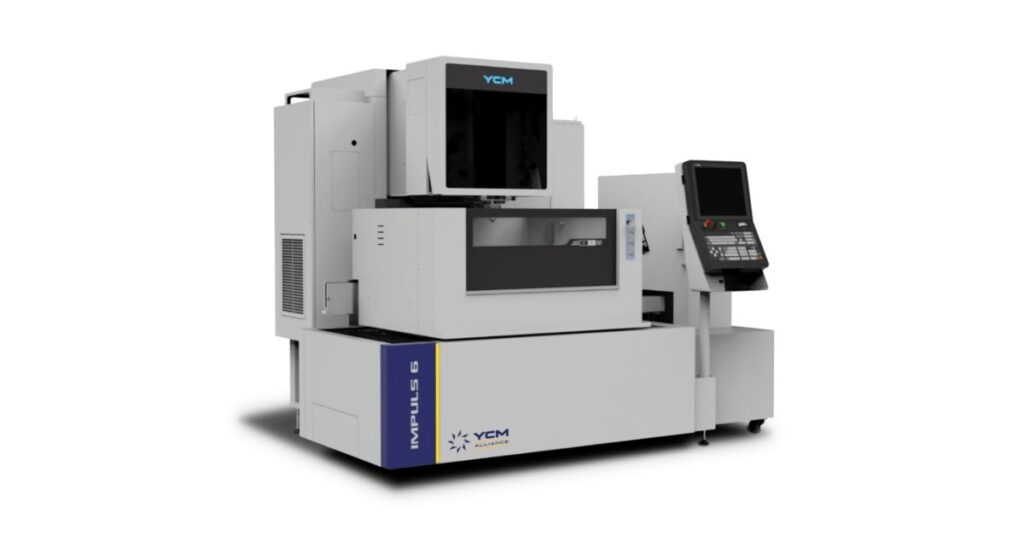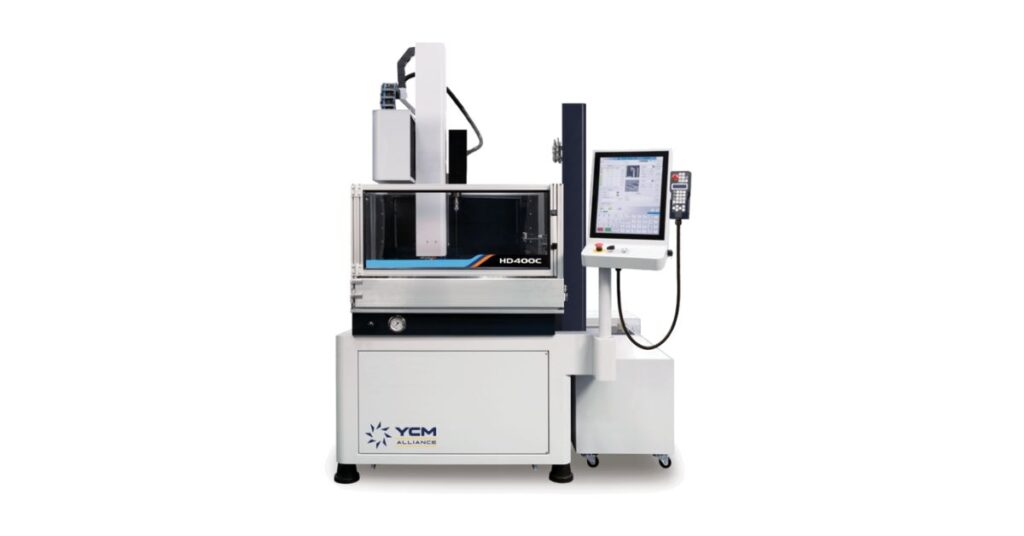EDM Guide: How Electrical Discharge Machining Works

Manufacturers often use electrical discharge machining (EDM) for creating complex shapes and intricate details that traditional machining methods cannot achieve. Whether you’re working with hardened steel, exotic alloys, or delicate components requiring micro-level precision, EDM offers unparalleled accuracy and surface finish quality.
From aerospace components to medical devices, this process has become a vital tool across industries where precision is paramount. In this EDM guide, we’ll discuss how electrical discharge machining works so that you can achieve consistent, high-quality results in your manufacturing operations.
The Basics of Electrical Discharge Machining
Electrical discharge machining operates on a different principle than conventional cutting methods. Instead of using physical cutting tools, EDM removes material through controlled electrical discharges between an electrode and the workpiece.
The process occurs in a dielectric fluid environment where thousands of tiny sparks per second erode material from the workpiece surface. Each spark creates temperatures exceeding 20,000°F, instantly vaporizing small amounts of material. This thermal process allows EDM to machine any electrically conductive material, regardless of its hardness.
Key advantages of EDM include:
- Machining hardened materials up to 65 HRC
- Creating complex internal cavities and sharp corners
- Achieving surface finishes as fine as 0.1 Ra
- Producing parts with minimal mechanical stress
- Working with thin walls and delicate features
Success depends on controlling electrical parameters rather than cutting forces and speeds.
Selecting the Right EDM Machine
Choosing the appropriate EDM machine depends on your specific application requirements, part geometry, and production volume. Two main types dominate the market: wire EDM and sinker EDM.
Wire EDM machines use a wire electrode to cut through materials, making them ideal for through-cuts and profiles, precision stamping dies, and complex 2D and 3D shapes. They’re perfect for high-accuracy parts requiring tight tolerances.
Sinker EDM machines use shaped electrodes to create cavities and complex forms. They’re often used for making injection molding dies, forging dies, and other complex internal features.

Choosing the Appropriate Electrode Material
Electrode selection directly impacts machining speed, surface finish, and electrode wear rates. Copper electrodes provide excellent conductivity and machining speed, making them suitable for rough machining operations, large cavity work, and applications where speed matters more than electrode wear.
Graphite electrodes offer superior wear resistance and can achieve finer surface finishes for applications requiring minimal electrode wear.
Copper-tungsten electrodes combine the benefits of both materials with their extended electrode life and consistent performance across varying conditions.
For wire EDM, brass wire remains the most common choice due to its excellent conductivity and reliability. Specialized wires, such as zinc-coated or stratified wires, can enhance cutting speed and surface finish for specific applications.
Setting up the Workpiece
Proper workpiece setup ensures accurate machining and prevents mistakes. Start by securing the workpiece in an appropriate fixture that provides rigid support while allowing access for the electrode or wire. Before setup, ensure the workpiece is properly grounded. Next, test material conductivity throughout the part, checking for internal stresses that might cause distortion.
For wire EDM, create appropriate start holes using conventional drilling or laser cutting. These holes must be properly deburred and positioned accurately to ensure precise wire threading and optimal cutting conditions. Be sure to clean surfaces to remove oils, scale, or other contaminants that might interfere with the electrical discharge process. Even small amounts of nonconductive material can cause inconsistent machining results.
Preparing the Dielectric Fluid
The dielectric fluid serves multiple critical functions in EDM. It acts as an electrical insulator until breakdown occurs, cools the discharge zone, and flushes away eroded particles. Proper fluid management directly affects machining quality and speed.
Dielectric fluid types include hydrocarbon oils for sinker EDM applications, deionized water for wire EDM operations, and synthetic fluids for specialized applications.
Be sure to maintain proper fluid cleanliness through regular filtration and monitoring. Contaminated fluid reduces machining efficiency and can cause surface finish problems.
Programming the EDM Machine
Modern EDM machines use sophisticated CNC controls that require careful programming to achieve optimal results. The programming process differs significantly from conventional machining because you’re controlling electrical parameters rather than mechanical cutting conditions.
Start with conservative settings, and gradually optimize based on your specific requirements. Many EDM machines include intelligent parameter databases that automatically select appropriate settings based on material type, electrode selection, and desired surface finish. For complex geometries, use CAD/CAM software to automatically generate toolpaths, calculate electrode wear compensation, and optimize machining strategies for your specific job requirements.

Monitoring the Machining Process
Active monitoring ensures consistent results and prevents mistakes during the machining process. Modern EDM systems provide real-time feedback on various process parameters that help optimize performance.
Watch for signs of unstable machining conditions, such as excessive arcing, inconsistent gap voltage, or unusual sounds. These symptoms often indicate problems with the setup, programming, or machine condition that require immediate attention. Adaptive control systems in advanced EDM machines automatically adjust parameters based on real-time conditions.
Troubleshooting Common EDM Issues
Most issues stem from improper setup, programming errors, or maintenance neglect. Frequent problems include:
- Poor surface finish caused by contaminated dielectric fluid or incorrect electrical parameters
- Slow cutting speeds from conservative settings or worn components
- Electrode wear related to improper material selection or excessive current
- Geometric inaccuracies from thermal effects, machine alignment, or programming errors
Keep detailed records of successful parameter combinations for different materials and applications to build your knowledge base over time. Develop systematic troubleshooting procedures that address the most likely causes first.
Performing Post-Machining Operations
EDM surfaces often require additional finishing operations to meet final specifications. The thermal nature of the EDM process creates a recast layer and heat-affected zone that may need removal depending on your application requirements.
For critical applications, consider the metallurgical effects of EDM on your workpiece material. Some applications may require specific heat treatment or surface modification after EDM to restore the desired material properties. Make sure to plan these operations during the initial job setup to ensure adequate stock allowance and proper sequencing of manufacturing operations.
Maintaining Your EDM Machine
Regular maintenance keeps your EDM machine operating at peak performance and extends its service life. Develop a comprehensive maintenance schedule that addresses both daily operations and long-term component replacement.
Keep detailed maintenance records to track component life and identify trends that might indicate developing problems. Preventive maintenance costs significantly less than emergency repairs and unplanned downtime.
The Future of EDM Technology
Electrical discharge machining continues evolving with advances in automation, process monitoring, and machine intelligence. New developments in electrode materials, dielectric fluids, and control systems promise even greater precision and productivity.
Emerging technologies such as additive manufacturing for electrode production, AI-driven process optimization, and real-time quality monitoring are transforming how manufacturers approach EDM applications. These innovations make EDM more accessible and cost-effective for a broader range of applications.
Improve Your Machining Process Today
After reading this EDM guide, understanding how electrical discharge machining works should be much more straightforward. As manufacturing demands for precision and complexity continue growing, EDM will play an increasingly important role in producing the components that power our modern world.
If you’re thinking of utilizing die mold machining in your operations, YCM Alliance has the equipment you need. Reach out to our team today to transform your facility for the better.